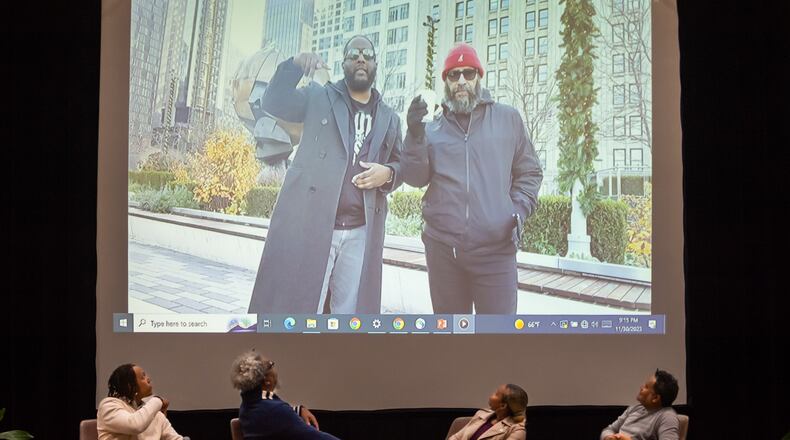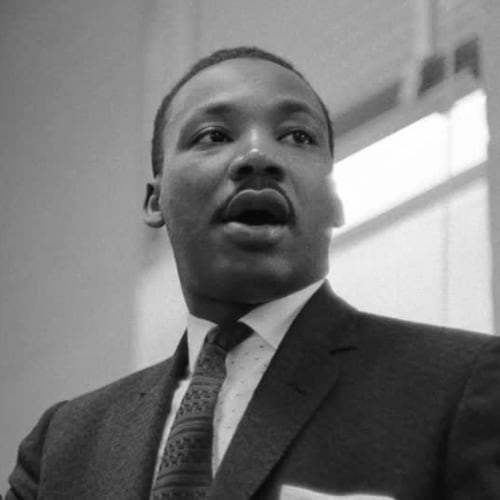In 2023, The Atlanta Journal-Constitution did a thing.
We produced, “The South Got Something to Say,” our first feature-length documentary under the newly-formed AJC Films.
Credit: Lauren Hubbard
Credit: Lauren Hubbard
Building on Atlanta and Georgia’s deep Black cultural roots, the film explored the history of hip-hop through the city’s massive influence on the genre. Now, as we enter Black History Month and build on the documentary’s momentum, we are still studying that influence.
We also ask what it is about Georgia that it can produce opera diva Mattiwilda Dobbs nearly a century ago, and rap legend Killer Mike, who is nominated for three Grammy awards today?
And in between, we wonder how Georgia’s red clay — mixed with soul and a fair share of trauma — went on to produce the likes of Little Richard, Otis Redding, James Brown and Ray Charles.
All of that is the foundation of The Atlanta Journal-Constitution’s annual Black History Month Series, launching today. Now in its ninth year, we are focusing on the rich artistic and cultural heritage of Atlanta and Georgia.
As we have done for the previous two years, we take our cues from the Association for the Study of African American Life and History, which was founded in 1915 by Carter G. Woodson, the father of Black History and Black History Month. Every year since 1928, the organization has marked Black History Week and now Month, with a theme.
In 2022, just out of a pandemic that disproportionally impacted Black Americans, we focused on health and wellness. Last year, amid social uprisings and the ramifications of a changing society, we looked at resistance.
This year, we will focus on “African Americans and the Arts,” and how Black people — through artistic and cultural movements like the New Negro, Black Arts, the Harlem Renaissance, hip-hop, and Afrofuturism — preserve history, community memory and empowerment.
That means digging deep into what has always made Atlanta a cultural hub. We have always considered ASALH’s themes to be very timely in how they coincide with national and world events.
This year, coming off of our involvement with “The South Got Something to Say,” is no different.
Aside from music, you will see articles this year on the visual and performing arts, literature, fashion, folklore, language, film, architecture, culinary and other forms of cultural expression African Americans have influenced.
Specifically, that will include articles on how the slave narrative became the foundation for Black literature; how Clark Atlanta University’s WCLK changed radio in the city; and how the mature set of African Americans party.
We will also have profiles on Blind Willie McTell, Celia Cruz, Edwin Moses, Jericho Brown, Hubbard Pryor, Jerome Meadows and the amazing Millie Jackson.
Credit: Associated Press
Credit: Associated Press
Our Sunday offerings will look at art museums on Black college campuses, graffiti culture, and Georgia’s musical “Mount Rushmore” of Little Richard, Otis Redding, James Brown and Ray Charles.
Those are just the tip of the iceberg. To both mark our ninth year and give you a taste of what’s coming up, here is a look back at our history, with nine of our favorite stories from the past decade.
Movin’ on Up: How a TV theme song motivates black America.
Genteel game of bridge a quiet act of rebellion for Black players: How Atlanta’s Black bridge players continue a tradition once denied them by Jim Crow laws.
Credit: Natrice Miller / Natrice.Miller@ajc.com
Credit: Natrice Miller / Natrice.Miller@ajc.com
‘The water brought us, the water took us away:’ On an 1803 Slave rebellion where enslaved Africans rebelled, chose death over bondage.
Credit: Shelia Poole
Credit: Shelia Poole
How ‘The New Negro’ started a renaissance, and not just in Harlem: The Black cultural movement built and promoted by Alain Locke reached far beyond New York City.
Credit: NY Public Library Public Colletions
Credit: NY Public Library Public Colletions
A King’s wedding: For the Middlebrooks, getting Martin Luther King Jr’s marriage blessing was worth the wait.
Credit: HYOSUB SHIN / AJC
Credit: HYOSUB SHIN / AJC
The Story of the Tragic Mulatto: How stereotypical trope drew on self-hatred, depression, alcoholism and sexual perversion.
For many, an Afro isn’t just a hairstyle: How a quarantine Afro helped a reporter explore his Blackness and identity.
Credit: AP file
Credit: AP file
Zeta Phi Beta: Celebrating 100 years of a Black sisterhood.
Black double-consciousness: How this sense of always looking at one’s self through the eyes of others is still strong.
In addition to the traditional stories that we do on African American pioneers, these pieces will run in our Living and A sections, as well as our front page, every day this month. You can also go to ajc.com/news/atlanta-black-history for more subscriber exclusives on the African American people, places and organizations that have changed the world.
About the Author
Keep Reading
The Latest
Featured













